Current Activities
The Residential Test Facility is currently being used for a range of research efforts.
Ventilation Studies
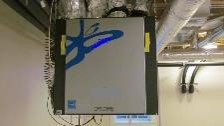
Minimum outdoor air ventilation rates specified in standards such as ASHRAE Standard 62.2 are generally based on envelope airtightness, building floor area, geographical location, and number of occupants. In practice, simple on/off controls and operating schedules are most commonly used to maintain the required ventilation rate. While carbon dioxide (CO2) based demand-controlled ventilation (DCV) is prevalent and in some cases required in commercial buildings, the use of DCV in homes is less so. In the United States, local codes may adopt a version of ASHRAE Standard 62.2 that stipulates a minimum outdoor airflow rate. Intermittent operation is permitted if the annual average exposure to a constant indoor contaminant source does not exceed the exposure that would have resulted with constant ventilation. Thus, studies are currently being conducted at the RTF to examine DCV performance. CO2 is injected at various locations according to daily occupancy schedules that were intended to simulate two virtual adults and two virtual children. Its measurements are then used to control, in real-time, the energy recovery ventilator (ERV). Two different brands of consumer grade, nondispersive infrared CO2 sensors with different accuracies were installed in four locations. The authors are testing several control algorithms that vary with control logic, sensor location(s), CO2 setpoint, and the airflow rate of the ERV. The annual relative exposure as defined in ASHRAE Standard 62.2-2019 will be used as a metric to evaluate whether the tested control algorithms comply with the standard. Performance of the control algorithms is also being evaluated based on outdoor air ventilation rates, as well as measured ozone and formaldehyde concentrations, which are not metrics included in the standard for intermittent operation.
Air Distribution
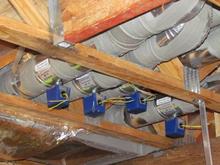
Highly insulated and airtight homes may call for different methods of distributing heated and cooled air throughout the home to provide high levels of thermal comfort to occupants. The research team is taking advantage of two different air distribution systems, one a large duct system and another being a small duct system, in combination with changeable vent configurations to investigate these different approaches. This research could lead to changes in standard practices for distributing heated and cooled air in efficient homes that will provide improved comfort to occupants while decreasing installation costs.
Water Quality

As water scarcity increases across the United States, water use reductions in homes makes great sense to conserve our precious water resources while decreasing utility costs to homeowners. In addition to the recent change in amount of water used in homes, plumbing systems are also starting to involve different materials than have been used in the past. These changes in water usage in homes has the potential to impact water quality. To help understand those impacts, NIST researchers are sampling water at different points in the water system and measuring the chemical and biological constituents. The goal is to assess the factors that can impact water quality in homes.
Water Heating
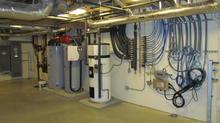
Water heating is the second largest consumer of energy in the average American home. To investigate ways to more efficiently provide hot water, the research team has evaluated the performance of heat pump water heaters over the course of a year. Heat pump water heaters promise to provide hot water at much lower energy cost than standard electric resistance water heaters. The team is currently examining a split heat pump system with the condensing unit located outdoors to assess performance. Since heat pump water heaters transfer heat from its surroundings to the water, they have a cooling effect on their surroundings. For this reason, positioning the evaporator outdoors moves that cooling effect out of the building, which could be advantageous in a climate that requires significant heating. An additional feature of this water heater is that it uses carbon dioxide as a refrigerant. Common refrigerants have high global warming potential when released. By using carbon dioxide, potential leaks result in much lower global warming impact. This water heater is being assessed against a usage profile typical for a family of four to assess its performance in different seasons.
Indoor Chemistry
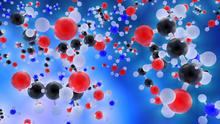
NIST will participate in and provide logistical support to a large field investigation at the NIST Net-Zero Energy Residential Test Facility to better understand fundamental chemical reactions that occur in indoor air. The Chemical Assessment of Surface and Air (CASA) Experiment will bring together a diverse group of chemists, surface scientists, engineers, and modelers from universities around North America to explore the fate of organic compounds. State of the art, real-time sampling instrumentation from multiple institutions will be placed internally and externally to the RTF. Together the collection of instruments and scientists will allow tracking of indoor reaction pathways and rates in a building for the first time. In addition to participating in the experiments, Among the numerous potential findings from the CASA experiments, this research could demonstrate the impact mechanical ventilation has on indoor air chemistry via the introduction of outdoor ozone, the partition and transformation of smoke from wildfires in indoor environments, the impact of relative humidity on water soluble gases and other novel findings.
Impact of Residential Homes on Distribution Grid
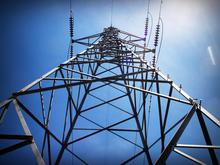
The electric power system, at the distribution level, is undergoing a significant change due to the high penetration of distributed energy resources, electric storage, electric vehicles, energy-efficient appliances, and intelligent control algorithms for managing energy generation and consumption. Residential homes play a significant role in this changing environment as they consumed 40 % of all electricity sold in the U.S. in 2020. Because of these changes, there has been a significant interest in using residential homes to provide ancillary services such as voltage support and frequency response. The objectives of this research topic are to study the aggregate effect of using appliances, as flexible loads, on grid stability, grid power quality, and operating costs. The goal is to create models of end-use appliances such as a heat pump, refrigerator, inverter, etc., and validate them using measurement data from the NZERTF. Using these models, we can simulate a neighborhood of residential homes and study the impact of aggregated load on the utility grid.
Indoor Lighting
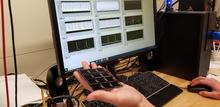
Light in homes is a critical aspect of indoor environmental quality, but it also has impacts on indoor chemistry and for powering Internet of Things devices that promise to sense and control our homes. NIST is gathering data on the spectra and intensity of light present in the home at different locations and in different times of the year to provide information to modelers of chemical reactions that can impact indoor air quality and for informing developers of photovoltaic modules meant to power small sensors and controls. The data may also be used to form standard test methods for such devices.
Ground Source Heat Pump
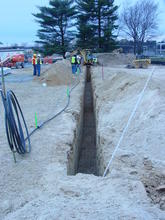
Researchers are preparing to install a ground source heat pump in the facility to assess performance over an extended period of time. The RTF was built with three different ground loops to provide a means to provide a steady temperature for use by a heat pump. The team is currently testing a geothermal heat pump in a laboratory that is designed to provide space conditioning as well as domestic hot water. After those tests are completed according to industry standard test methods, the unit will be installed in the RTF to get a sense of real-world performance to inform designers as well as developers of standard test methods.

